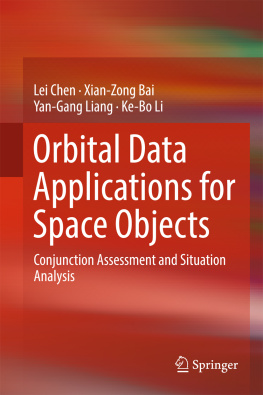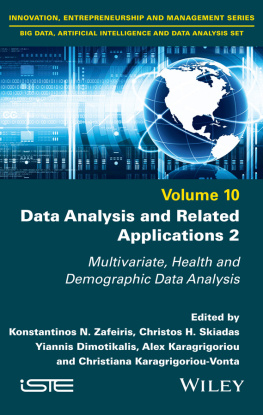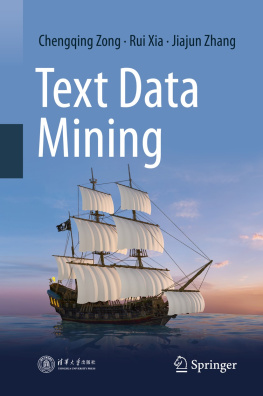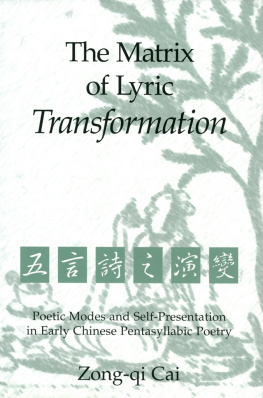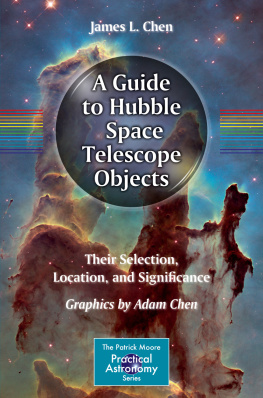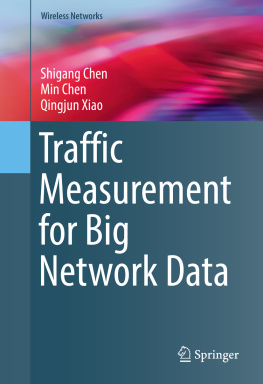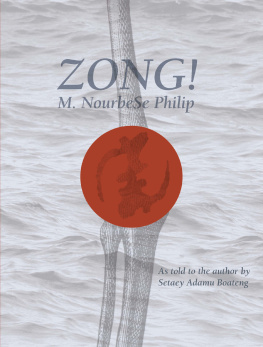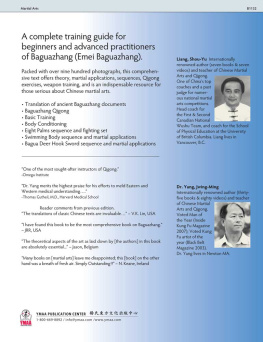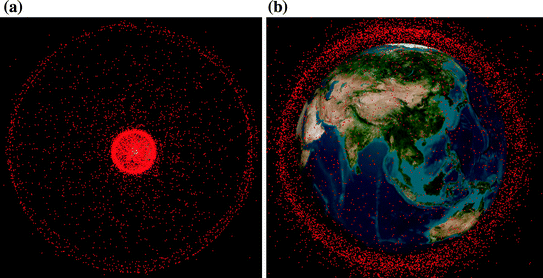1. Introduction
The notion of space object generally refers to all artificial objects operating and traveling in outer space, including man-made earth satellite, space station, space shuttle, and space debris produced from them or their wastes. A majority of space objects are space debris in quantitative terms. In accordance with the definition concluded at the 32nd Conference of UNCOPUOS, STSC, the space debris (alias: the orbital debris) are the artificial objects and its fragments, debris, and components and parts, which are out of service, cannot be retained or cannot have the original functions resumed, traveling along earth orbits or reentering the condensed atmospheric layer.
Along with mankinds continuous strides made in aerospace industry and frequent and intensive launching of space activities, the quantity of in-orbit space objects (spacecrafts, rocket bodies, and space debris) is increasing, showing the sign of aggravation of space debris environment. As in January 2014, the total number of trackable space objects catalogued in U.S. Space Surveillance Network (SSN) has reached 16655, among which 3715 are with payload (including the operating ones and disabled ones), 12940 are rocket bodies and space debris, taking up 3/4 of the total and such number is still on the increase [ for the distribution of the bigger space objects with definitive orbits.
Fig. 1.1
Distribution of Space Objects
The increase of space objects markedly enlarges the possibility of collisions between spacecraft and space objects, putting the normal operations of spacecraft, sustainable development of aerospace industry and terrestrial space environment into great jeopardy with a long-lasting and extensive threat. There are several space objects collisions in history. For instance, ESA Ariane rocket debris ran upon the gravity gradient stabilizing arm []. Plenty of space debris pieces were produced during collision. Due to higher altitude of collision point, the debris will be in orbit for a long time, constantly deteriorating the space environment. Thus, the in-orbit collision between the U.S. and Russian satellites has sounded an alarm bell to mankind for the space safety.
The U.S. National Space Policy Intersector Guideline [] includes 7 articles, as prescribed in Article 3 of Preserving the Space Environment and the Responsible Use of Space:
Preserve the Space Environment.
For the purposes of minimizing debris and preserving the space environment for the responsible, peaceful, and safe use of all users, the United States shall:
Lead the continued development and adoption of international and industry standards and policies to minimize debris, such as the United Nations Space Debris Mitigation Guidelines;
Develop, maintain, and use space situational awareness (SSA) information from commercial, civil, and national security sources to detect, identify, and attribute actions in space that are contrary to responsible use and the long-term sustainability of the space environment;
Continue to follow the United States Government Orbital Debris Mitigation Standard Practices, consistent with mission requirements and cost effectiveness, in the procurement and operation of spacecraft, launch services, and the conduct of tests and experiments in space;
Pursue research and development of technologies and techniques, through the Administrator of the National Aeronautics and Space Administration (NASA) and the Secretary of Defense, to mitigate and remove on-orbit debris, reduce hazards, and increase understanding of the current and future debris environment; and
Require the head of the sponsoring department or agency to approve exceptions to the United States Government Orbital Debris Mitigation Standard Practices and notify the Secretary of State.
Foster the Development of Space Collision Warning Measures.
The Secretary of Defense, in consultation with the Director of National Intelligence, the Administrator of NASA, and other departments and agencies, may collaborate with industry and foreign nations to: maintain and improve space object databases; pursue common international data standards and data integrity measures; and provide services and disseminate orbital tracking information to commercial and international entities, including predictions of space object conjunction.
What specified above need to be aided with Space Situational Awareness which is able to acquire space objects and space environment information through continuous observation of the space and information gathering to strengthen in-orbit safety of spacecrafts, space event analysis and assessment, and threat forecast and assessment. Satellite maneuver, anticipated and unanticipated launch and reentry and task-hindered space environmental change are mainly described in the space events.
It is imperative that only by grounding on real-time and valid space object data can the space situation be more explorable and controllable through Space Situational Awareness. But how to acquire space object data, what kind of space object data can be obtained, and how to use such data are the issues to be further focused on in Space Situational Awareness studies.
1.1 Data SourceSpace Surveillance System
The responsibility of discovering and detecting all space objects and their orbits are undertaken in Space Surveillance as a key component of Space Situational Awareness. By various observational means, motion parameters of space object in real time are able to be discovered, tracked and measured by Space Surveillance network, so that its orbital characteristics can be determined. Cataloging large space objects and updating their orbital data from time to time according to the observed and determined orbital data, the dynamic database of space objects can be created.
1.1.1 Space Surveillance
The tasks of Space Surveillance are to detect, track, identify, and catalogue all in-orbit space objects as well as to provide target catalog database and real-time orbital and precise characteristics information. The space object indicated in this book refers to the space object which has its orbit determined by cataloguing. Space Surveillance is one of main measures to obtain the space situational information; the Capacity of Space Surveillance is the rock upon which the space superiority in future is built and the key basis for the space control. Moreover, the Space Surveillance is also taken as an important aerospace infrastructure and basic capability, playing significant roles in both military and civil sectors.
Space Surveillance is consisted of 4 tasks categorized as below []:
- (1)
To maintain the space object catalog and detect new launches in a timely manner and to monitor orbital maneuvers, deorbit and disintegration of existing objects;
- (2)
To identify space objects, evaluate task load and analyze threat level;

